Ceviche, Poke, Crudo, Carpaccio: Your Guide To Raw Fish Dishes Around The World
What does it all mean? Besides delicious uncooked fish, of course.
Ceviche, Poke, Crudo, Carpaccio: Your Guide To Raw Fish Dishes Around The World
What does it all mean? Besides delicious uncooked fish, of course.

Given that this list is inspired by the poke-craze, we should narrow our criteria down a bit. Merely the absence of heat doesn’t necessarily qualify a dish for inclusion on this list; lox, gravlax, and nova, for example, are brined and/or cold-smoked to cure them, but are typically eaten as an appetizer, rather than a main course. Escabeche (or the Caribbean version, escovitch), appears very similar to a ceviche, but is typically cooked, either fried or poached, which disqualifies it. Crudo and carpaccio, too, aren’t really dishes, but more just adjectives meaning “raw”: They can refer to any protein served in any way.
What we’re getting at here are raw or marinated fish dishes, served as a main course. These dishes are gaining steam even away from the coastal regions where raw fish is an old tradition, partly because the US is ever-hungry for new and more exotic foods, but also because raw is an excellent way to appreciate high-quality seafood. These dishes came about as a way to celebrate and make use of the local catch, and have taken on different characters based on the different fish caught in different parts of the world. Eating a raw fish dish is a way to really see and taste what it’s like to live along a certain coast.
That said, there is, as with any seafood dish, a high risk of eating something you shouldn’t. In general, you should opt for pretty high-quality stuff here, to avoid the risk of food poisoning (which, to be fair, is a lower risk than you might think). But even more, you should be careful not to eat certain species of fish. Seafood Watch, run by the Monterey Bay Aquarium, is the leading resource for learning about fish – you’d be surprised how many common species (bluefin tuna, for example) you should just…never, ever eat. Anyway, here’s our list!
Ceviche
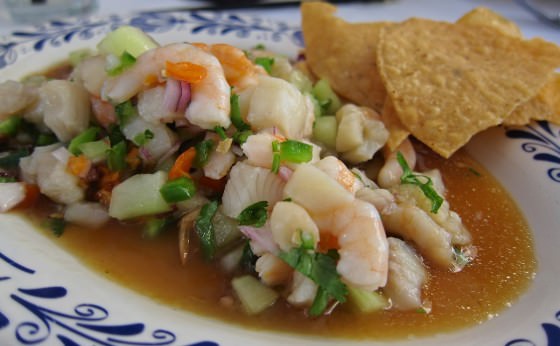
Most associated with the coastal region of Peru, ceviche has spread to most of Latin America and even up into North America. At its core, ceviche consists of raw seafood marinated in strong citrus juice. The variety of seafood, type of citrus, length of marination, and garnishes (often herbs, vegetables, and chiles) vary considerably based on where the ceviche comes from; a Mexican ceviche may have little in common with a Peruvian ceviche. Types of seafood often include shrimp, squid, white fish like sea bass, and shark. Often it’s served with something crunchy, like fried green plantains, popcorn, or fried tortillas. Occasionally it’s mixed with tomato sauce or even ketchup. In Peru, the marinade itself is incredibly acidic, salty, and spicy, and is sometimes served in a shot glass before the meal. This is called leche de tigre, which mean’s “tiger’s milk.”
Sashimi
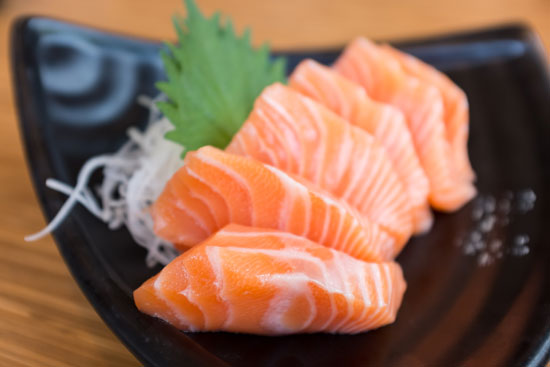
Sashimi is a very old Japanese preparation, and one of the seemingly simplest. The dish consists of carefully sliced raw fish (and occasionally meat) that’s not typically marinated and often served with no sauce and minimal garnishes. Unlike other raw fish dishes, sashimi is not preserved with acid or smoke, but given a slight extension in shelf-life due to the method with which the fish is killed, a spike through the brain known as ike jime. (Sushi, for what it’s worth, refers to the vinegared rice and not the fish; any topping with sushi rice is considered sushi.) Common fish for sashimi include salmon, tuna, squid, mackerel, and sea urchin. The Korean dish hoe, when it includes seafood, is extremely similar and differs only in that it is usually served with a sauce (soy, chili paste, that kind of thing).
Poke
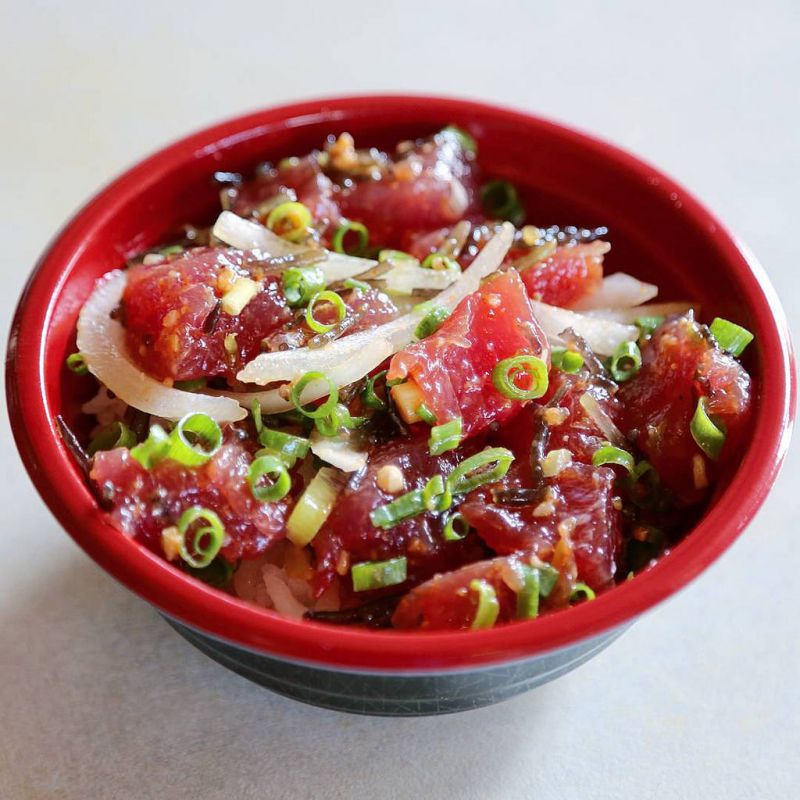
A sort of hybrid ceviche/sashimi dish, the Hawaiian poke (POH-kay) is, these days, usually a bowl of cubed raw fish, sometimes served over rice, in a sauce. Most commonly it’s dressed with soy sauce, seaweed, and sesame oil, but it’s not uncommon to see Japanese mayonnaise, wasabi, hot sauce (often Sriracha), onions, avocado, or basically anything else in poke. It’s a fairly young dish; raw fish has been eaten by Hawaiians for centuries, but the dish recognizable as poke dates back perhaps to the late 19th century. It’s also one informed by immigrants, so poke is a particularly fluid dish. On the US mainland, the word “poke” tends to be used to refer to any dish of cubed raw fish in a bowl.
Tartare
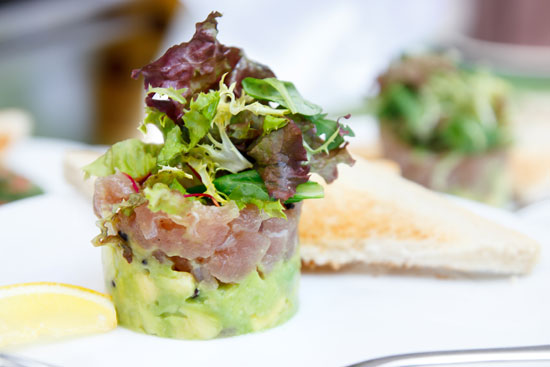
Traditionally a French dish consisting of minced raw beef, seasoned heavily, and often served with a raw egg yolk, the basic preparation has been extended out to other proteins. Tuna tartare is perhaps the most common: It’s also a mound of finely chopped raw flesh, seasoned with basically anything, and served with something to put it on, like toast. Tuna tartare dates to the 1970s at a restaurant called Le Duc, in Paris.
Kinilaw
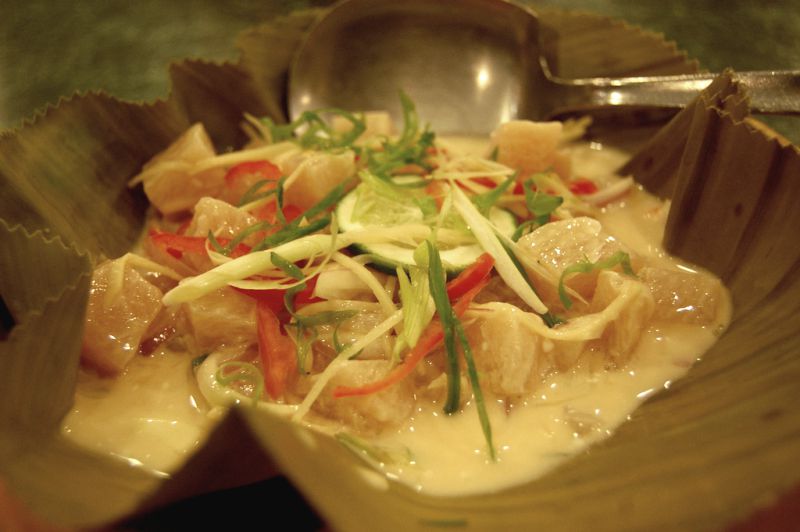
One of the many examples of the cultural overlap between the Philippines and former Spanish colonies in Latin America, kinilaw is a raw fish or meat dish fairly similar to ceviche in concept. Kinilaw, though, usually uses the small green citrus fruit called the calamansi rather than the more typical limes of Latin America, and sometimes uses coconut milk as well. Tuna and shrimp are common. A variant called ota ika can be found on various Polynesian islands, though it’s more commonly called by its French name: poisson cru, or “raw fish.”
Yusheng
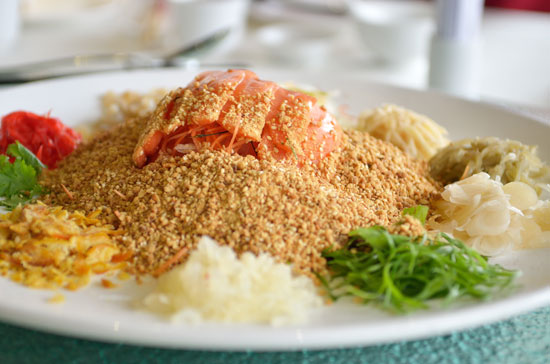
There are plenty of regional variations on raw fish dishes throughout China, but the best-known is probably yusheng, a raw fish salad often served during Chinese New Year celebrations. It’s a party dish; an elaborate salad of strips of raw fish (usually salmon) tossed with everything from vegetables (daikon, carrots, chiles) to herbs (cilantro, parsley, lime leaves) to seeds and nuts (peanuts, sesame seeds) and heavily dressed with a vinegar-based dressing. It’s perhaps more common within Chinese communities outside China, especially in Malaysia, where it was created in the 1920s.
Follow us

This work is licensed under a Creative Commons Attribution-NoDerivatives 4.0 International License.
Want to republish a Modern Farmer story?
We are happy for Modern Farmer stories to be shared, and encourage you to republish our articles for your audience. When doing so, we ask that you follow these guidelines:
Please credit us and our writers
For the author byline, please use “Author Name, Modern Farmer.” At the top of our stories, if on the web, please include this text and link: “This story was originally published by Modern Farmer.”
Please make sure to include a link back to either our home page or the article URL.
At the bottom of the story, please include the following text:
“Modern Farmer is a nonprofit initiative dedicated to raising awareness and catalyzing action at the intersection of food, agriculture, and society. Read more at <link>Modern Farmer</link>.”
Use our widget
We’d like to be able to track our stories, so we ask that if you republish our content, you do so using our widget (located on the left hand side of the article). The HTML code has a built-in tracker that tells us the data and domain where the story was published, as well as view counts.
Check the image requirements
It’s your responsibility to confirm you're licensed to republish images in our articles. Some images, such as those from commercial providers, don't allow their images to be republished without permission or payment. Copyright terms are generally listed in the image caption and attribution. You are welcome to omit our images or substitute with your own. Charts and interactive graphics follow the same rules.
Don’t change too much. Or, ask us first.
Articles must be republished in their entirety. It’s okay to change references to time (“today” to “yesterday”) or location (“Iowa City, IA” to “here”). But please keep everything else the same.
If you feel strongly that a more material edit needs to be made, get in touch with us at [email protected]. We’re happy to discuss it with the original author, but we must have prior approval for changes before publication.
Special cases
Extracts. You may run the first few lines or paragraphs of the article and then say: “Read the full article at Modern Farmer” with a link back to the original article.
Quotes. You may quote authors provided you include a link back to the article URL.
Translations. These require writer approval. To inquire about translation of a Modern Farmer article, contact us at [email protected]
Signed consent / copyright release forms. These are not required, provided you are following these guidelines.
Print. Articles can be republished in print under these same rules, with the exception that you do not need to include the links.
Tag us
When sharing the story on social media, please tag us using the following: - Twitter (@ModFarm) - Facebook (@ModernFarmerMedia) - Instagram (@modfarm)
Use our content respectfully
Modern Farmer is a nonprofit and as such we share our content for free and in good faith in order to reach new audiences. Respectfully,
No selling ads against our stories. It’s okay to put our stories on pages with ads.
Don’t republish our material wholesale, or automatically; you need to select stories to be republished individually.
You have no rights to sell, license, syndicate, or otherwise represent yourself as the authorized owner of our material to any third parties. This means that you cannot actively publish or submit our work for syndication to third party platforms or apps like Apple News or Google News. We understand that publishers cannot fully control when certain third parties automatically summarize or crawl content from publishers’ own sites.
Keep in touch
We want to hear from you if you love Modern Farmer content, have a collaboration idea, or anything else to share. As a nonprofit outlet, we work in service of our community and are always open to comments, feedback, and ideas. Contact us at [email protected].by Dan Nosowitz, Modern Farmer
February 4, 2016
Modern Farmer Weekly
Solutions Hub
Innovations, ideas and inspiration. Actionable solutions for a resilient food system.
ExploreExplore other topics
Share With Us
We want to hear from Modern Farmer readers who have thoughtful commentary, actionable solutions, or helpful ideas to share.
SubmitNecessary cookies are absolutely essential for the website to function properly. This category only includes cookies that ensures basic functionalities and security features of the website. These cookies do not store any personal information.
Any cookies that may not be particularly necessary for the website to function and are used specifically to collect user personal data via analytics, ads, other embedded contents are termed as non-necessary cookies.